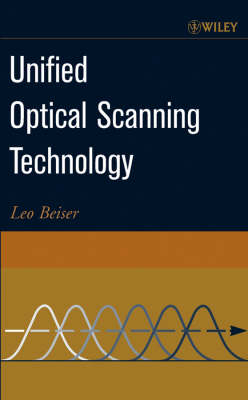
Unified Optical Scanning Technology
Wiley-Interscience (Verlag)
978-0-471-31654-1 (ISBN)
Written by an award-winning leader in the field, this is a thoroughly integrated overview of the many facets and disciplines of optical scanning. Of particular utility to both practitioner and student are such features as:
An overview of the technology and unifying principles, including active and passive scanning, optical transfer, and system architecture
In-depth chapters on scanning theory and processes, scanned resolution, scanner devices and techniques, and the control of scanner beam misplacemen
A comprehensive review of the government-sponsored research of agile beam steering, now primed for commercial adaptation
A unique focus on the Lagrange invariant and its revealing resolution invariant
LEO BEISER retired recently as the president and research director of Leo Beiser Inc., a consulting and research company specializing in image and data scanning and recording for global clients including 3M, Agfa-Gevaert, Bell Labs, Boeing, Burroughs, Compugraphic, Kodak, Canon, General Electric, Polaroid, Scitex, and Xerox. Prior to that, as a staff researcher and project manager at CBS Laboratories, Autometric/Raytheon, Radio Receptor Corporation, and Polarad Electronics Corp., he pioneered formative advances in super-high resolution/speed image and data scanning and recording. An extensively published author and internationally renowned expert, Beiser has been recognized by his profession with numerous awards including the prestigious George W. Goddard Award from the International Society for Optical Engineering. Leo Beiser is Adjunct Professor in the Institute of Imaging Science, Polytechnic University, New York
Preface xi
1 INTRODUCTION-TECHNOLOGY OVERVIEW AND UNIFYING PRINCIPLES 1
1.1 Optical Scanning Characteristics and Disciplines 1
1.2 Active and Passive Scanning 3
1.3 Input, Output, and Remote Sensing Systems 8
1.4 Optical and Resolution Invariants; Optical Transfer 9
1.5 System Architecture 12
2 SCANNING THEORY AND PROCESSES 19
2.1 The Point Spread Function and Its Convolution 19
2.2 Quantized or Digitized Scan 27
2.3 Gaussian Beam Propagation 31
2.4 Scanned Quality Criteria and the Modulation Transfer Function 37
3 SCANNED RESOLUTION 45
3.1 Influence and Significance of Scanned Resolution 45
3.2 Aperture Shape Factor 50
3.3 The Resolution Equation, the Resolution Invariant, and Beam Propagation 54
3.4 Augmented Resolution 56
3.5 Resolution in Passive and Remote Sensing Systems 61
4 SCANNER DEVICES AND TECHNIQUES 63
4.1 Scanner Technology Organization 63
4.2 High-Inertia Scanning 65
4.3 Rotating Polygons 65
4.4 Holographic Scanners 85
4.5 Oscillatory (Vibrational) Scanners 100
4.6 Scanner-Lens Relationships 108
4.7 Low-Inertia Scanning 112
4.8 Acoustooptic Scanners 113
4.9 Electrooptic (Gradient) Scanners 124
4.10 Agile Beam Steering 128
5 CONTROL OF SCANNER BEAM MISPLACEMENT 147
5.1 Cross-Scan Error and Its Correction 148
5.2 The Ghost Image and Its Elimination 155
6 SUMMARY-MAJOR SCANNER CHARACTERISTICS 161
6.1 Comparison of Major Scanner Types 164
References 169
Index 179
| Erscheint lt. Verlag | 25.2.2003 |
|---|---|
| Sprache | englisch |
| Maße | 162 x 242 mm |
| Gewicht | 435 g |
| Themenwelt | Technik ► Nachrichtentechnik |
| ISBN-10 | 0-471-31654-7 / 0471316547 |
| ISBN-13 | 978-0-471-31654-1 / 9780471316541 |
| Zustand | Neuware |
| Haben Sie eine Frage zum Produkt? |
aus dem Bereich


